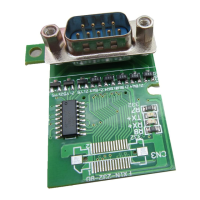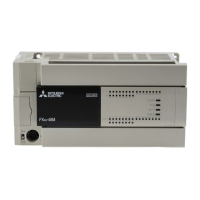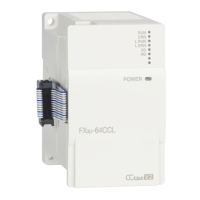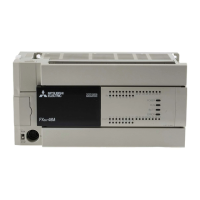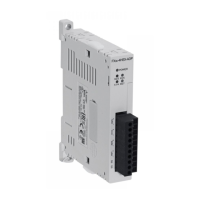8 Manual Control
8.1 Mechanical Zero Return Control
137
FX3U-20SSC-H Positioning Block User's Manual
1
Introduction
2
System
configuration
3
Example
Connection
4
Installation
5
Wiring
6
Memory
configuration
and data
7
Before starting
positioning
control
8
Manual control
9
Positioning
Control
10
Table Operation
2. DOG search function
The zero return with DOG search is executable with forward/reverse rotation limit. At this time, the zero return
action varies in the following way according to the zero return starting position.
1) If the starting position is in the near point signal OFF area (before passing DOG)
a) Operation is conducted in the zero return direction at the zero return speed (high speed).
b) After the DOG detection, deceleration to the zero return speed (creep) begins.
c) After detecting the zero-point signal count start timing, the zero-point signal is counted.
d) After counting the specified number of zero-point signals, the travel is stopped.
2) If the starting position is in the near point signal ON area
a) Operation is conducted at the zero return speed (high speed) in the direction opposite to the zero
return direction.
b) Upon the DOG detection (escaping from the DOG), deceleration to stop begins.
c) Operation is conducted in the zero return direction at the zero return speed (high speed).
d) After the DOG is detected, deceleration to the zero return speed (creep) begins.
e) After counting the zero-point signal, the 20SSC-H stops.
3) If the starting position is in the near point signal OFF area (after passing DOG)
a) Operation is conducted in the zero return direction at the zero return speed (high speed).
b) Upon the forward/reverse rotation limit, the travel decelerates to stop.
c) Operation is conducted in the direction opposite to the zero return direction at the zero return speed
(high speed).
d) Upon the DOG detection (escaping from the DOG), the travel decelerates to stop.
The operation begins again in the zero return direction at the zero return speed (high speed).
e) After DOG detection, the travel decelerates to the zero return speed (creep speed) and, after counting
the zero-point signal, the 20SSC-H stops.
4) When the limit switch (forward or reverse rotation limit) in the zero return direction turns ON
a) The operation is conducted in the direction opposite to the zero return direction at the zero return
speed (high speed).
b) Upon the DOG detection (escaping from the DOG), the travel decelerates to stop.
c) The operation is conducted again in the zero return direction at the zero return speed (high speed).
d) Upon the DOG detection, the travel decelerates to the zero return speed (creep speed) and after
counting the zero-point signal, the 20SSC-H stops.
Caution
• If the DOG is not detected during the DOG search operations, a limit error occurs.
• When using a DOG search function, provide the forward/reverse rotation limit in either the servo amplifier
or the PLC.
→ For the forward/reverse rotation limit, refer to Section 7.3
3. Changing the zero return speed
Use the override function or operation speed change function to change the zero return speed (high speed).
However, the speed does not change when the operation speed change disable flag is ON.
→ For the override function, refer to Subsection 7.6.1
→ For the operation speed change function, refer to Subsection 7.6.2
DOG
1)
2)
3)4)
Speed
Reverse rotation limit
Zero return direction
Forward
rotation limit
Reverse rotation
Position
Forward rotation
Zero-point
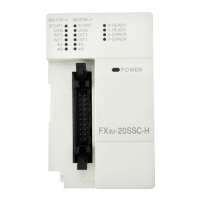
